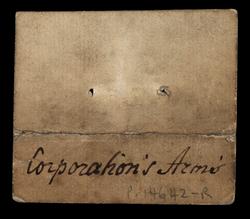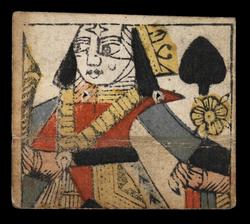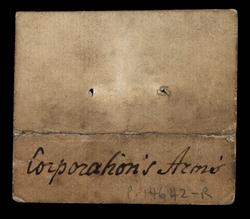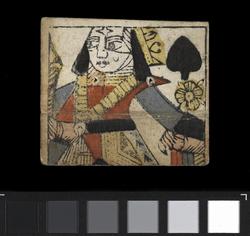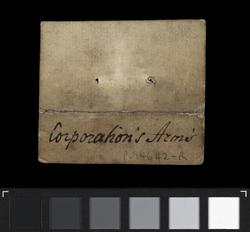Current Location: In storage
Titles
Fragment of the Queen of Spades
Maker(s)
Printmaker:
Unknown
Publisher:
Unknown
Entities
Categories
Description
Fragment of the Queen of Spades. Hand-coloured woodcut on pasteboard. Upper half of the card. The Queen faces left and the pip is located at upper right. The figure holds a yellow rose in her left hand. There is a crease across the card where it has been folded. A handwritten inscription on the verso in black ink: ‘Corporation’s Arms’.’ There are two holes at upper centre, which are most likely stitching holes relating to the secondary use of the card as a stiffening material for bookbinding. See W.M. Fletcher, who describes other playing cards and MSS found near staircase A at Trinity College in 1902 which are ‘pierced with stitching holes containing fragments of thread’ and states that, ‘These no doubt represent some rubbish from destroyed book bindings, for it should be remembered that this staircase provided a back way to the College Library when it was housed in this block’. See, W.M. Fletcher, M.A., Fellow of Trinity College, ‘On some old playing-cards found in Trinity College’, in _Proceedings of the Cambridge Antiquarian Society_, vol. XI, 1907, p.455 (ref. copy with curatorial annotations in the margin which was donated by Fletcher and found with the playing card collection). P.14642-R was contained, along with P.14643-R, a fragment of the Ten of Clubs, inside an envelope marked: ‘Playing cards from Trinity College (Mr W.M. Fletcher) / see Camb. Antiq. Soc. Comm. vol. XI, p.454 / Recd. Sep 10/07 / H.A.L.’. However, it is not listed or described by Fletcher in either of his essays published in 1907 and 1915 in the _Proceedings of the Cambridge Antiquarian Society_. The card probably came from the same pack as P.14643-R and most likely dates from the 1600s, as an inscription on the verso of P.14643-R would seem to relate to the schemes to drain The Fens during the 1650s (See Note in record P.14643-R). See also Michael Goodall, 'Behind the wainscot and under the floorboards', Lucida, 9 (2003), pp. 196-199, which reproduces Fletcher's earlier findings.
Legal notes
Given by Walter Morley Fletcher, 1907
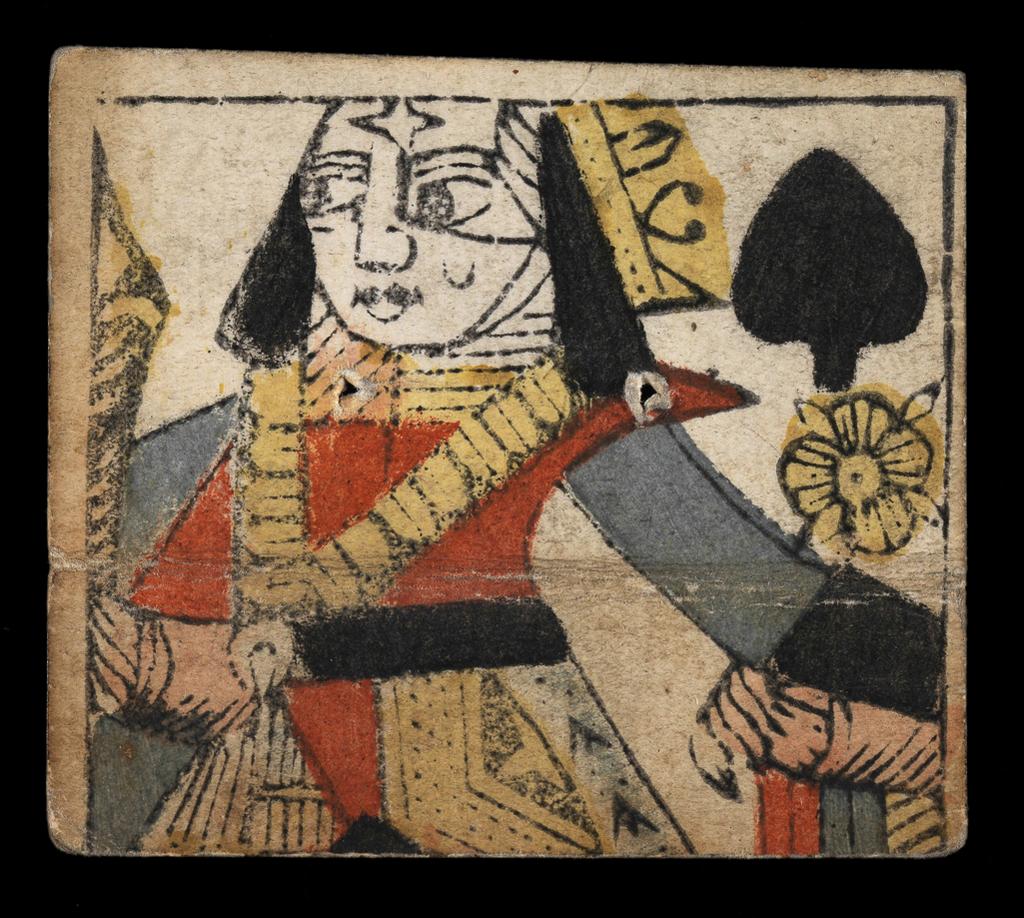
 IIIF Manifest
IIIF Manifest
